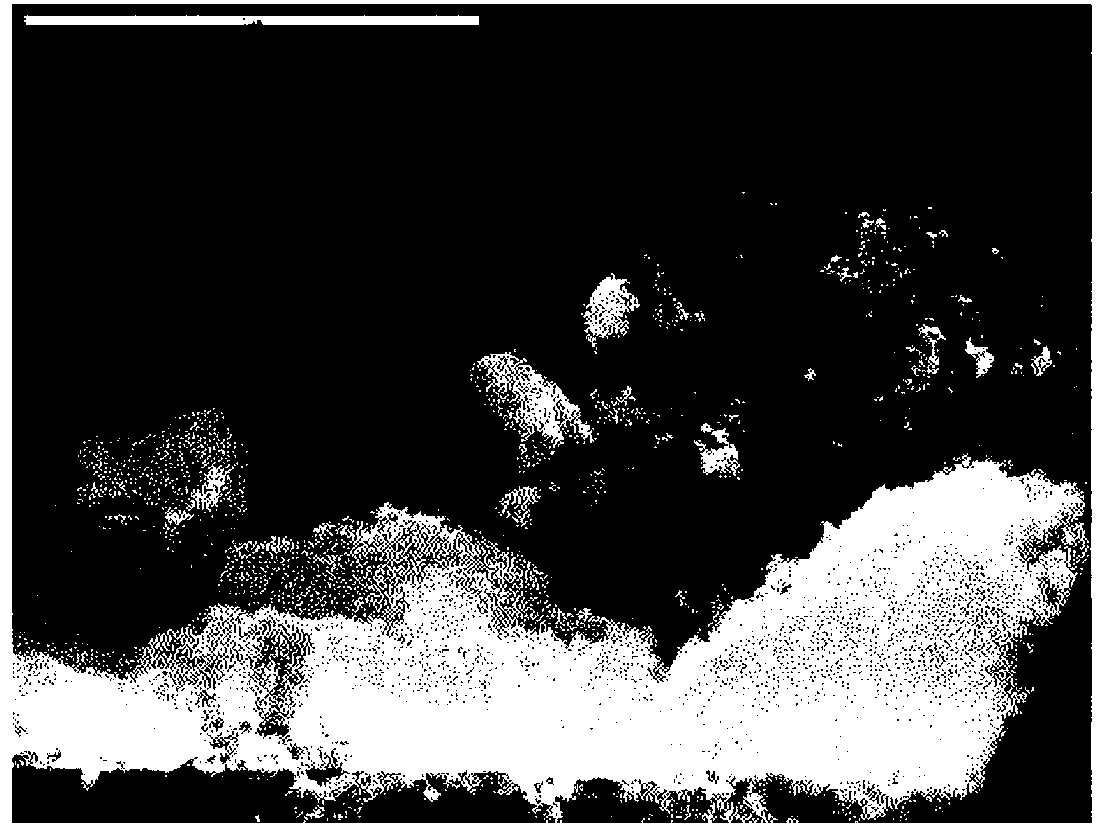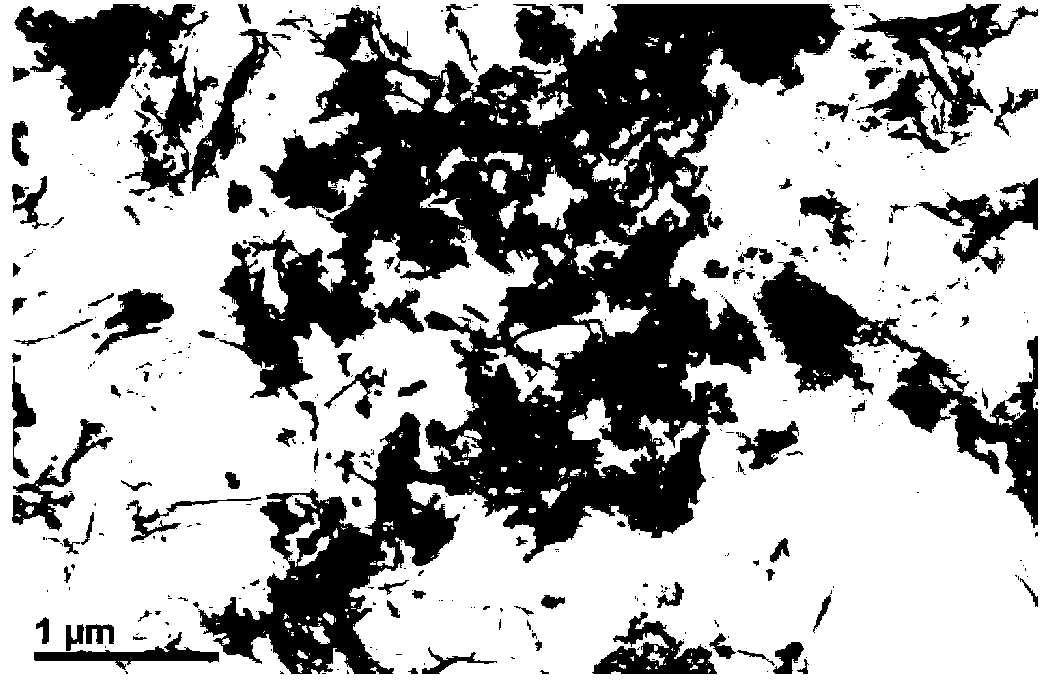Novel efficient grapheme loaded nano-iron material for adsorbing phosphorus in water
A nano-iron and graphene technology, applied in the direction of adsorption water/sewage treatment, water/sewage treatment, water/sludge/sewage treatment, etc., can solve the problem of nano-iron stability decline
- Summary
- Abstract
- Description
- Claims
- Application Information
AI Technical Summary
Problems solved by technology
Method used
Image
Examples
Embodiment 1
[0029] In a 200ml Erlenmeyer flask, add 100ml concentration of 4mg / L phosphate root solution, and add 500mg nano-iron adsorption material accounting for 20% of the total weight of the material. Put the Erlenmeyer flask into a shaker with a speed of 30 rpm and a temperature of 25 °C. After 10 minutes, the graphene-loaded nano-iron adsorbed 80% of the phosphate.
Embodiment 2
[0031] In a 200ml Erlenmeyer flask, add 100ml of a phosphate solution with a concentration of 4mg / L, and add 250mg of an adsorption material in which nano-iron accounts for 40% of the total weight of the material. Put the Erlenmeyer flask into a shaker with a speed of 30 rpm and a temperature of 25 °C. After 10 minutes, the graphene-supported nano-iron adsorbed 73% of the phosphate.
Embodiment 3
[0033] Add 100ml concentration of 4mg / L phosphate root solution in a 200ml Erlenmeyer flask, and add 160mg of adsorption material whose nano-iron accounts for 60% of the total weight of the material. Put the Erlenmeyer flask into a shaker with a speed of 30 rpm and a temperature of 25 °C. After 10 minutes, the graphene-supported nano-iron adsorbed 70% of the phosphate.
PUM
 Login to View More
Login to View More Abstract
Description
Claims
Application Information
 Login to View More
Login to View More - R&D
- Intellectual Property
- Life Sciences
- Materials
- Tech Scout
- Unparalleled Data Quality
- Higher Quality Content
- 60% Fewer Hallucinations
Browse by: Latest US Patents, China's latest patents, Technical Efficacy Thesaurus, Application Domain, Technology Topic, Popular Technical Reports.
© 2025 PatSnap. All rights reserved.Legal|Privacy policy|Modern Slavery Act Transparency Statement|Sitemap|About US| Contact US: help@patsnap.com


